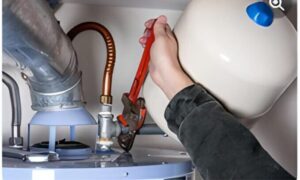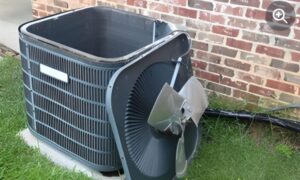Excessive humidity can go unnoticed, silently affecting our health in ways we may not fully comprehend. It is not just a matter of discomfort, but rather a potential threat that can lead to respiratory infections, aggravated asthma and allergies, and the growth of harmful mold and mildew.
However, the impact of high humidity doesn't stop there. It can also worsen indoor air quality, leading to decreased productivity and an overall sense of unease.
In this discussion, we will explore the signs of excessive humidity, the health benefits of controlling it, effective methods for humidity control, recommended indoor humidity levels, and the importance of regular maintenance.
By the end, you'll realize the importance of prioritizing your health through proper humidity control, leaving you eager to discover the solutions that await.
Effects of High Humidity on Health
The detrimental effects of high humidity on health are well-documented. Among the key concerns are an increased risk of respiratory infections, exacerbation of asthma and allergies, deterioration of indoor air quality, growth of mold and mildew, and overall discomfort and decreased productivity.
High humidity creates an environment conducive to the growth of microorganisms, such as bacteria and fungi. This, in turn, can lead to respiratory infections. It also worsens symptoms for individuals with asthma and allergies, as the moisture in the air can trigger respiratory distress.
Additionally, high humidity promotes the growth of mold and mildew. These can release allergens and irritants into the air, further exacerbating respiratory issues.
Moreover, high humidity can lead to a deterioration in indoor air quality. This happens as moisture can cause pollutants, such as dust mites and volatile organic compounds, to become airborne. The result is respiratory symptoms, allergic reactions, and overall discomfort.
Lastly, high humidity has been shown to decrease productivity and well-being. It can cause feelings of lethargy, difficulty concentrating, and decreased cognitive performance.
Signs of Excessive Humidity in Indoor Spaces
Excessive humidity in indoor spaces can be identified through observable signs such as:
- Condensation on windows and walls
- Musty odors
- Mold spots and stains
- Warped or damaged wood
- Increased dust mite activity
Condensation occurs when warm, moist air comes into contact with cooler surfaces, leading to water droplets forming on windows and walls.
Musty odors are often caused by the growth of mold and mildew, which thrive in humid environments.
Mold spots and stains are visible signs of mold growth, which can have detrimental effects on air quality and health.
Warped or damaged wood is a result of moisture absorption, as wood swells and distorts in humid conditions.
Additionally, increased dust mite activity is associated with higher humidity levels, as these microscopic pests thrive in moist environments.
It is crucial to address these signs promptly to prevent further health risks and damage to indoor spaces.
Health Benefits of Controlling Humidity Levels
Controlling humidity levels in indoor spaces offers a range of health benefits that contribute to overall well-being and improved respiratory function. Maintaining an optimal humidity level helps to reduce respiratory symptoms such as coughing, wheezing, and shortness of breath. It also prevents the growth of mold and mildew, which can lead to allergies and respiratory infections.
Moreover, controlling humidity levels promotes better sleep quality, as excessive humidity can disrupt sleep patterns and cause discomfort. Additionally, maintaining proper humidity levels decreases the risk of heat-related illnesses, as high humidity hinders the body's ability to cool down through sweating.
Effective Methods for Humidity Control
Maintaining optimal indoor humidity levels requires the implementation of effective methods that can control and regulate moisture in the air.
One such method is the use of dehumidifiers, which are designed to extract excess moisture from the air and maintain a desired humidity level.
Proper ventilation and air circulation also play a crucial role in humidity control, as they help to remove humid air and replace it with fresh, dry air.
Regular maintenance of HVAC systems is essential to ensure their efficiency in controlling humidity levels.
Additionally, sealing air leaks and insulating walls can prevent moisture infiltration from the outside.
Monitoring humidity levels with hygrometers allows for accurate assessment and adjustment of indoor humidity, ensuring optimal comfort and health.
Recommended Indoor Humidity Levels
The optimal indoor humidity levels recommended for maintaining a healthy and comfortable environment range from 30-50%. This range provides a balance between preventing the growth of mold and mildew, and avoiding excessive dryness that can cause respiratory irritation.
For allergy sufferers, a lower humidity level below 45% is often recommended to minimize the presence of dust mites and other allergens. On the other hand, in colder climates, a slightly higher humidity level around 40% can help prevent the drying out of nasal passages and skin.
It is important to note that personal comfort preferences may vary, and adjustments can be made within this range accordingly. However, extreme fluctuations in humidity levels should be avoided, as they can lead to discomfort and potential health issues.
Maintaining the recommended indoor humidity levels through the use of dehumidifiers, proper ventilation, and regular maintenance of HVAC systems is crucial for creating a healthy and comfortable indoor environment.
Importance of Regular Maintenance
Regular maintenance plays a crucial role in ensuring optimal indoor humidity levels and promoting a healthy and comfortable environment. Neglecting maintenance tasks can lead to various issues, such as malfunctioning HVAC systems, which can contribute to excessive humidity.
Regular maintenance of HVAC systems includes cleaning or replacing filters, checking for leaks, and ensuring proper airflow. These tasks are essential to prevent the buildup of moisture and the growth of mold and mildew.
Additionally, regular maintenance helps identify and address potential issues before they escalate, reducing the risk of costly repairs. By maintaining HVAC systems, homeowners can effectively control indoor humidity levels, ensuring that they remain within the recommended range of 30-50%.
Ultimately, regular maintenance is a proactive approach to maintaining a healthy indoor environment and preventing the adverse effects of excessive humidity.
Conclusion: Prioritizing Health With Humidity Control
Prioritizing the control of humidity levels in indoor spaces is essential for maintaining optimal health and well-being.
Excessive humidity can have detrimental effects on respiratory health, leading to an increased risk of respiratory infections and exacerbation of asthma and allergies. It can also deteriorate indoor air quality, promote the growth of mold and mildew, and cause discomfort and decreased productivity.
On the other hand, controlling humidity levels provides numerous health benefits. It reduces respiratory symptoms, prevents mold-related illnesses, improves sleep quality, and enhances overall well-being. Additionally, maintaining appropriate humidity levels decreases the risk of heat-related illnesses.
To effectively control humidity, methods such as using dehumidifiers, ensuring proper ventilation and air circulation, regular HVAC system maintenance, sealing air leaks, and monitoring humidity levels with hygrometers can be employed.
The recommended indoor humidity range is 30-50%, with adjustments based on personal comfort and avoidance of extreme fluctuations.
Frequently Asked Questions
How Does High Humidity Affect the Growth of Mold and Mildew in Indoor Spaces?
High humidity creates an ideal environment for mold and mildew growth in indoor spaces. The excess moisture provides the necessary conditions for spores to thrive, leading to their proliferation and potential health risks.
What Are the Potential Health Risks Associated With Increased Dust Mite Activity Due to High Humidity?
Increased dust mite activity due to high humidity can lead to respiratory issues, allergies, and skin irritations. Dust mites thrive in humid environments and can trigger asthma attacks and allergic reactions, posing a significant health risk to individuals.
Can Excessive Humidity Worsen Existing Respiratory Conditions, Such as Chronic Bronchitis or Copd?
Excessive humidity can worsen existing respiratory conditions, such as chronic bronchitis or COPD. It can increase the risk of respiratory infections, exacerbate symptoms, and deteriorate indoor air quality, highlighting the importance of humidity control for individuals with these conditions.
Are There Any Specific Measures That Can Be Taken to Control Humidity Levels in Different Rooms of a House?
To control humidity levels in different rooms of a house, effective measures include using dehumidifiers, ensuring proper ventilation and air circulation, maintaining HVAC systems, sealing air leaks and insulating walls, and monitoring humidity levels with hygrometers.
How Does Maintaining Proper Humidity Levels Contribute to Improved Sleep Quality?
Maintaining proper humidity levels contributes to improved sleep quality by preventing discomfort and respiratory issues. Optimal humidity promotes relaxation, reduces nasal congestion, and prevents the growth of allergens such as dust mites and mold, creating a conducive environment for restful sleep.
Conclusion
In conclusion, maintaining optimal indoor humidity levels is crucial for safeguarding our health and well-being.
Excessive humidity can lead to a range of health problems, deteriorate air quality, and decrease productivity. By recognizing the signs of excessive humidity and implementing effective humidity control methods such as dehumidifiers, proper ventilation, and regular maintenance, we can reduce respiratory symptoms, prevent mold-related illnesses, and improve sleep quality.
Prioritizing humidity control is essential for creating a comfortable and healthy living environment.








